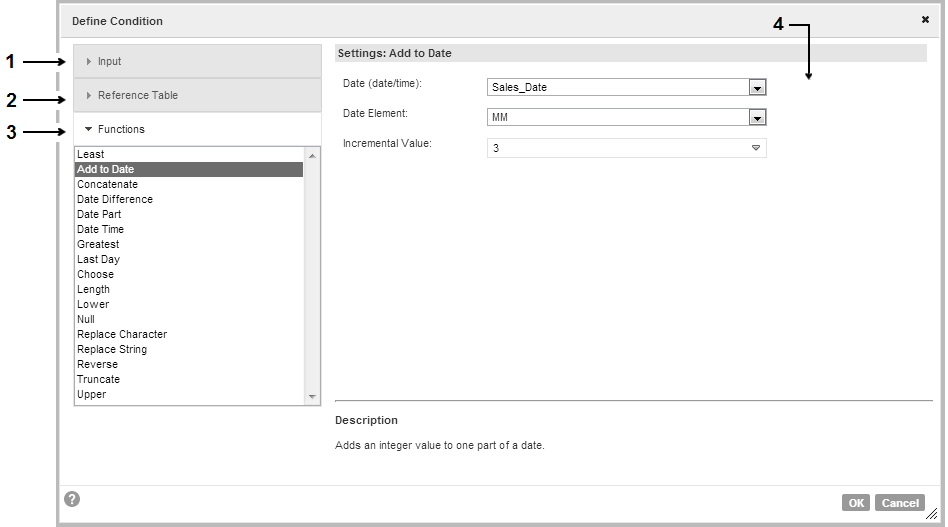Conditions
A condition defines the type of analysis that a rule statement performs on the input data. When you configure a condition in a rule statement, you select the type of analysis that the rule statement performs.
You can configure a condition to analyze the input data values in the following ways:
- •The condition can compare the input data values to a value that you specify.
- •The condition can compare the input data values to the values from an input in the rule set.
- •The condition can apply a function to the input data.
Types of Condition Analysis
When you configure a condition, you select the input data to analyze and you select the type of analysis to perform.
Configure a condition to perform one of the following types of analysis:
- Compare the input data values to a value that you enter.
- The rule statement compares the values in the input column to the value that you enter.
- Compare the input data values to the values on another input.
- The rule statement compares the values in the input column to the values in an input column that you specify.
- Search for null values.
- The rule statement verifies the condition if a value in the input column is a null or an empty string.
- Apply a function to the input data.
- The rule statement uses a function that you define to analyze or update the values in the input column. The rule statement verifies the condition when the function returns a value for the input data.
Condition Configuration Options
When you configure a condition, you specify a data value to compare to the input values, or you define an expression to apply to the input values. You can enter the data value, or you can select an input from the rule set as the source of the data values. Use the condition options in the rule statement to enter or select the data value. Define the expression in a configuration dialog box that you open from the rule statement.
Enter a data value to the condition
To enter a data value, select a data type from the condition options in the rule statement.
You can select the following data types in the condition options:
- •float
- •integer
- •null
- •string
Enter the data value to the rule statement in the rule set properties view. The rule statement does not display a data value when you select a null data type.
Note: You can specify a date/time data type and select a date/time input when you configure an expression in the condition.
Add an input to the condition
To use an input as the source of the comparison data, select the input option from the condition options in the rule statement. Then, select the input name from the condition options.
Apply an expression to the condition
To configure an expression, select the function option from the condition menu. Use the Define Condition dialog box to configure the expression.
The following image shows the Define Condition dialog box:
- 1. Input options.
- 2. Reference table options.
- 3. Function options.
- 4. Editable fields for the option that you select.
To define an expression, select Functions. You can also define an operation that compares the condition input to a table of reference data.

